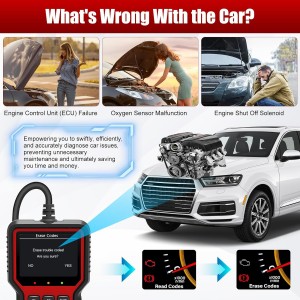The Vehicle Information function in OBD2 Code Reader diagnostics retrieves critical identification and configuration data stored in a vehicle’s onboard computer.
This data is essential for understanding the vehicle’s specifications, software status, and compliance with regulations.
Key Data Included:
- VIN (Vehicle Identification Number):
- A unique 17-character code identifying the vehicle’s make, model, year, and manufacturer.
- Useful for: Verifying vehicle authenticity, checking recall information, or during insurance/registration processes.
- Calibration IDs and Software Versions:
- Identifies the current software versions of the Engine Control Unit (ECU) and other modules.
- Useful for: Ensuring software updates (e.g., emissions fixes, performance tweaks) are correctly applied.
- ECU (Engine Control Unit) Details:
- Includes ECU part numbers and configuration data.
- Useful for: Diagnosing compatibility issues after repairs or part replacements.
- Vehicle Metrics (e.g., Mileage, Odometer):
- Some systems provide odometer readings or engine runtime hours.
- Useful for: Tracking maintenance schedules or verifying mileage during used-car purchases.
- Emissions Compliance (e.g., CALID, CVN):
- Confirms compliance with regional emissions standards.
- Useful for: Passing emissions tests or addressing check engine lights related to emissions.
Common Use Cases:
- Pre-Purchase Inspections: Verify VIN and odometer to detect tampering or fraud.
- Post-Repair Checks: Ensure software updates or replaced parts match factory specifications.
- Maintenance Planning: Use mileage/odometer data to schedule oil changes or part replacements.
- Troubleshooting: Identify mismatched software versions causing performance issues.
Why It Matters to Regular Drivers & Professional Car Shop/owner :
- Transparency: Avoid scams (e.g., odometer rollbacks) when buying/selling vehicles.
- Cost Savings: Prevent unnecessary repairs by confirming software/hardware compatibility.
- Compliance: Ensure emissions systems meet legal requirements to avoid fines or failed inspections.
- Convenience: Quickly access vehicle details for insurance, registration, or resale purposes.
By leveraging vehicle information data, drivers gain insights to make informed decisions about maintenance, repairs, and ownership.
Post time: May-12-2025











